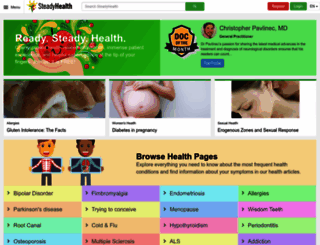SteadyHealth | Ask. Share. Contribute | SteadyHealth.com
Page Load Speed
17.1 sec in total
First Response
303 ms
Resources Loaded
10.8 sec
Page Rendered
6.1 sec

About Website
Welcome to steadyhealth.com homepage info - get ready to check Steady Health best content for United States right away, or after learning these important things about steadyhealth.com
Participate in health discussions and share your experiences. Ask medical experts and learn your way to better health. Read medical articles and breaking health news.
Visit steadyhealth.comKey Findings
We analyzed Steadyhealth.com page load time and found that the first response time was 303 ms and then it took 16.8 sec to load all DOM resources and completely render a web page. This is a poor result, as 90% of websites can load faster.